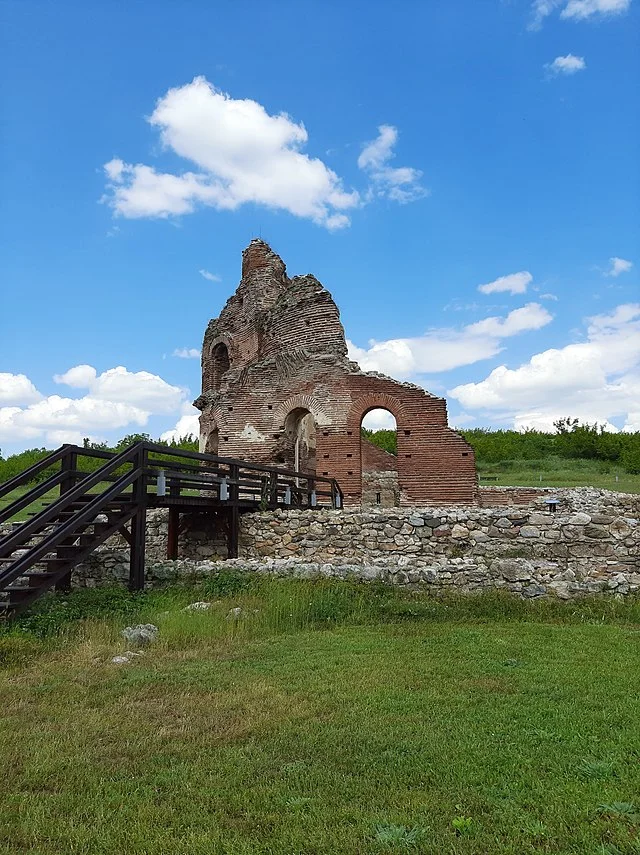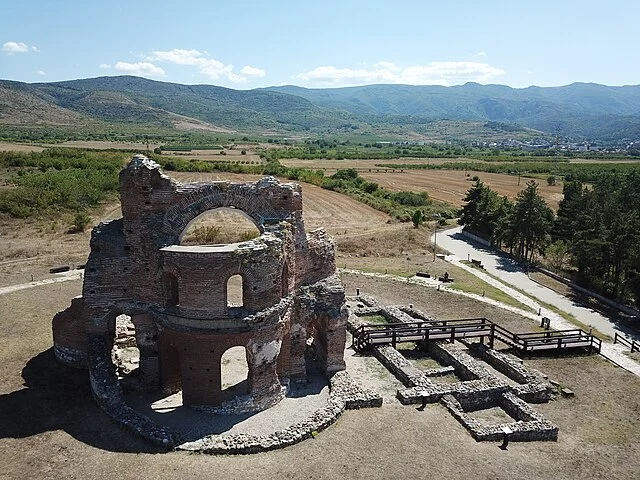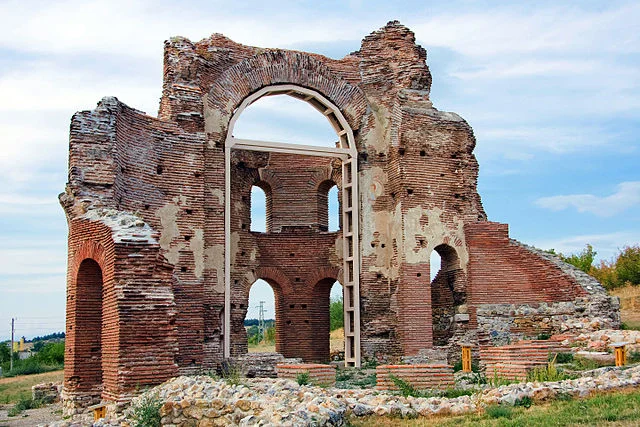The Red Church (Chervenata Tsarkva) is an ancient early Christian site located near the village of Perushtitsa, in central Bulgaria. The church is significant for its historical, architectural, and archaeological value. Its name comes from the red bricks used in its construction, which remain visible today.
Get your dose of History via Email
History of The Red Church

The Red Church was built in the 5th century AD, during the reign of the Byzantine Empire. Archaeological evidence suggests that the church functioned as a Christian basilica. Scholars believe that it was constructed at a time when Christianity had become the dominant religion in the region.
The church is thought to have been part of a larger settlement or religious complex. The presence of a necropolis and various artifacts suggests that it may have been a place of pilgrimage or a local center for Christian worship.
Architecture and Structure

The Red Church is a well-preserved example of early Christian architecture. It measures approximately 15 meters by 10 meters and is rectangular in shape. The building consists of a central nave and two side aisles, typical of a basilica design.
The church was constructed using red bricks, giving it its distinctive color. The walls, which remain standing today, were once decorated with frescoes. However, most of these frescoes have been lost or damaged over time.
The church’s roof was originally a wooden structure, but it has since collapsed. The remains of the roof, along with the interior floor, show signs of a once grand structure. Researchers have found evidence of mosaic floors, which would have added to the church’s beauty.
Religious Significance

The Red Church was a significant center for early Christian worship. Its location and architectural features suggest that it may have been a bishop’s seat or an important religious center for the region. The church was in use for several centuries, with evidence of repairs and additions made throughout its history.
Archaeological excavations have revealed a variety of religious artifacts, such as ceramic lamps, oil burners, and crosses. These items suggest the church’s role in Christian rituals and ceremonies during its active years.
Excavations and Findings

Excavations of the Red Church began in the 20th century and continue to this day. Archaeologists have uncovered numerous artifacts that provide insight into the church’s history. These include pottery fragments, coins, and inscriptions, many of which date back to the 5th and 6th centuries AD.
In addition to these artifacts, researchers have found remnants of the church’s mosaic floors and portions of the original frescoes. Although much of the original decoration is lost, these findings help scholars understand the artistic and religious practices of early Christians in Bulgaria.
Conclusion
The Red Church is an important archaeological and historical site in Bulgaria. Its construction during the 5th century AD highlights the spread of Christianity in the region. The church’s architectural features and the artifacts discovered at the site offer valuable insights into early Christian worship and religious practices. Despite the passage of time, the Red Church remains a significant monument to Bulgaria’s Christian heritage.
Source:

